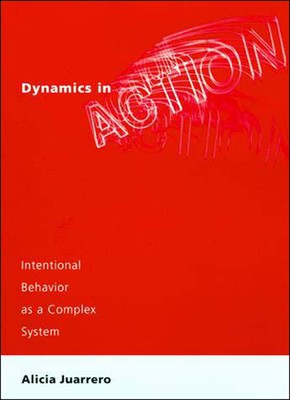
- We will send in 10–14 business days.
- Author: Alicia Juarrero
- Publisher: Bradford Book
- Pages: 300
- ISBN-10: 0262600471
- ISBN-13: 9780262600477
- Format: 15.3 x 22.8 x 1.5 cm, minkšti viršeliai
- Language: English
- SAVE -10% with code: EXTRA
Reviews
Description
What is the difference between a wink and a blink? The answer is important not only to philosophers of mind, for significant moral and legal consequences rest on the distinction between voluntary and involuntary behavior. However, action theory--the branch of philosophy that has traditionally articulated the boundaries between action and non-action, and between voluntary and involuntary behavior--has been unable to account for the difference.
Alicia Juarrero argues that a mistaken, 350-year-old model of cause and explanation--one that takes all causes to be of the push-pull, efficient cause sort, and all explanation to be prooflike--underlies contemporary theories of action. Juarrero then proposes a new framework for conceptualizing causes based on complex adaptive systems. Thinking of causes as dynamical constraints makes bottom-up and top-down causal relations, including those involving intentional causes, suddenly tractable. A different logic for explaining actions--as historical narrative, not inference--follows if one adopts this novel approach to long-standing questions of action and responsibility.
EXTRA 10 % discount with code: EXTRA
The promotion ends in 23d.13:02:39
The discount code is valid when purchasing from 10 €. Discounts do not stack.
- Author: Alicia Juarrero
- Publisher: Bradford Book
- Pages: 300
- ISBN-10: 0262600471
- ISBN-13: 9780262600477
- Format: 15.3 x 22.8 x 1.5 cm, minkšti viršeliai
- Language: English English
What is the difference between a wink and a blink? The answer is important not only to philosophers of mind, for significant moral and legal consequences rest on the distinction between voluntary and involuntary behavior. However, action theory--the branch of philosophy that has traditionally articulated the boundaries between action and non-action, and between voluntary and involuntary behavior--has been unable to account for the difference.
Alicia Juarrero argues that a mistaken, 350-year-old model of cause and explanation--one that takes all causes to be of the push-pull, efficient cause sort, and all explanation to be prooflike--underlies contemporary theories of action. Juarrero then proposes a new framework for conceptualizing causes based on complex adaptive systems. Thinking of causes as dynamical constraints makes bottom-up and top-down causal relations, including those involving intentional causes, suddenly tractable. A different logic for explaining actions--as historical narrative, not inference--follows if one adopts this novel approach to long-standing questions of action and responsibility.


Reviews